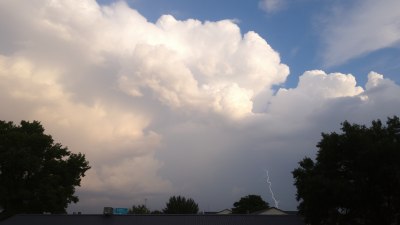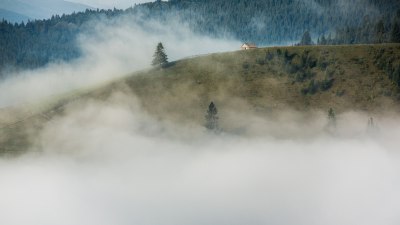The Surprising Link Between Cold Floors and Existential Dread
Explore how cold floors can trigger existential dread, revealing the hidden connection between physical discomfort and deep psychological states.

Have you ever stepped onto a cold floor and felt an unexpected wave of unease ripple through your mind? While a chilly surface underfoot might seem like a trivial discomfort, there is a fascinating psychological relationship between cold floors and feelings often described as existential dread. This uncommon connection reveals how subtle environmental factors influence our mental and emotional well-being more profoundly than commonly realized.
Existential dread refers to the deep-seated anxiety over the meaning and purpose of life, often accompanied by a sense of isolation or insignificance. Though commonly studied within philosophy and psychology, the triggers for this intense feeling can stem from surprisingly mundane sources. Among these is the sensation of coldness against bare feet, a physical stimulus that evokes more than just bodily discomfort.
Understanding Existential Dread
To grasp the interaction between cold floors and existential dread, it is essential first to understand what existential dread entails. Rooted in existential philosophy, this kind of dread is not simply fear but a reflective, profound anxiety about one's place in the world. It encompasses themes of mortality, freedom, isolation, and the search for meaning. Unlike fear that is usually tied to concrete threats, existential dread is often abstract and intangible, challenging individuals at their core.
Psychologists recognize that existential dread can emerge when individuals confront the uncertainty and ambiguity of existence. This state can be both paralyzing and illuminating, prompting a quest for purpose or plunging one into despair. While the triggers vary from deep personal reflection to external life events, physical sensations can also prime or intensify these feelings.
The Physiology of Cold Sensations
Cold floors generate a distinct physical sensation that engages the body's thermoregulatory system. When bare feet touch a cold surface, sensory receptors in the skin detect a drop in temperature and relay this information to the brain. This stimulus provokes physiological responses such as shivering, vasoconstriction (narrowing of blood vessels), and increased metabolic activity designed to conserve heat.
These responses activate parts of the nervous system, particularly the sympathetic nervous system responsible for the body's fight-or-flight reactions. Exposure to cold activates stress responses that signal potential threats to homeostasis. While the body efficiently manages thermal regulation, the psychological interpretation of the cold can vary widely depending on context and individual sensitivity.
Cold as a Metaphor and Psychological Trigger
Beyond physical discomfort, coldness carries powerful symbolic connotations in human experience. Cultural narratives often link cold with isolation, emptiness, and emotional detachment. Phrases like “cold hearted,” “left out in the cold,” or “the cold grip of fear” exemplify the emotional weight that this sensation holds.
These metaphors partly arise because coldness affects bodily comfort and social interaction. Physically cold environments may lead to less socialization and more withdrawal, which can echo the psychological isolation inherent in existential dread. Therefore, the affective meaning of coldness primes the mind for deeper engagement with themes of loneliness and alienation.
Neuroscientific Insights
Neuroscientific research helps to elucidate the pathways linking physical coldness to emotional states. The insular cortex, a region of the brain that processes bodily sensations, also plays a role in emotional awareness and empathy. When cold signals enter the brain, the insula integrates these with emotional and cognitive information, potentially amplifying feelings of discomfort beyond the physical domain.
Moreover, the anterior cingulate cortex (ACC) involved in processing social pain and distress may also be engaged by the discomfort caused by cold. Studies have shown that physical pain and social rejection activate overlapping brain regions, suggesting a close relationship between physical and psychological suffering. Cold floors may therefore serve as subtle but persistent reminders of vulnerability and hardship, influencing mood and thought patterns.
Empirical Studies on Sensory Input and Mood
Though specific research directly linking cold floors to existential dread remains limited, studies on sensory input and mood provide relevant insights. Environmental stressors such as temperature can profoundly impact mental health. For example, exposure to cold has been associated with increased cortisol levels, a hormone linked to stress.
Furthermore, individuals exposed to uncomfortable thermal environments report higher irritability, decreased cognitive performance, and elevated feelings of sadness or anxiety. Such emotional shifts can cumulatively contribute to existential rumination by reducing psychological resilience and increasing vulnerability to negative thoughts.
Personal Accounts and Anecdotal Evidence
Many people recount moments when stepping onto a cold floor sparked an oddly unsettling feeling, as though the chill penetrated beyond the skin to unsettle the mind. These anecdotes often describe a sudden introspection or a fleeting sense of insignificance, hinting at the mind-body connection underlying the link to existential dread.
Artists and writers have occasionally drawn on this motif, exploring how physical environments induce powerful emotional or philosophical states. Cold floors thus become not only a literal condition but also a narrative device to express alienation or profound disquiet.
Cultural and Historical Perspectives
In various cultures and historical periods, coldness and cold environments have symbolized a range of psychological and spiritual themes. For instance, in traditional Nordic contexts, long winters and cold landscapes nurture myths surrounding survival, transcendence, and solitude.
Religious and philosophical traditions also often connect physical coldness to spiritual trials or awakenings. The discomfort experienced through cold exposure can be seen as a purifying or awakening force, compelling individuals to confront deeper existential questions.
Practical Implications and Coping Strategies
Recognizing how cold floors and related environmental factors influence psychological states enables practical approaches to foster well-being. Simple interventions such as wearing slippers, adding rugs, or increasing indoor heating can mitigate the physical discomfort that may trigger negative emotional spirals.
Mindfulness and grounding techniques likewise encourage individuals to observe bodily sensations without attaching catastrophic meanings. By decoupling physical coldness from symbolic interpretations, one can diminish the intensity of existential dread triggered by environmental cues.
Therapeutic Approaches
Cognitive-behavioral therapy (CBT) and existential therapy often address the interpretation of physical sensations and their impact on mental health. Therapists can help patients explore how bodily discomfort influences mood and thought patterns, developing healthier cognitive frameworks and coping mechanisms.
Exposure therapy, mindfulness-based stress reduction, and somatic therapies may also reduce hypersensitivity to thermal stimuli and improve emotional regulation. Such approaches highlight the importance of integrating physical and psychological care.
Designing Spaces for Psychological Comfort
Architects and interior designers increasingly acknowledge the role of sensory environments in mental health. Incorporating warm flooring materials, adequate insulation, and ambient temperature controls can create spaces that nurture psychological security and reduce triggers for existential distress.
Public and private spaces designed with sensory comfort in mind support emotional stability, enhancing productivity, social interaction, and overall quality of life. This intersection between environmental design and psychological insight illustrates the profound impact of subtle physical factors on human experience.
Research Opportunities and Future Directions
Although the link between cold floors and existential dread is compelling, further empirical research is needed to deepen understanding. Experimental studies measuring physiological responses, brain activity, and psychological states in controlled temperature settings could elucidate causal relationships.
Multidisciplinary research combining neuroscience, psychology, environmental science, and design may produce innovative strategies to address mental health challenges rooted in environmental discomfort. Longitudinal studies could also explore how chronic exposure to cold environments influences existential attitudes and well-being over time.
Summary of Key Points
In summary, cold floors represent more than a minor physical inconvenience. The cold triggers physiological stress responses, activates brain regions involved in emotional processing, and resonates with deep-seated cultural and psychological themes of isolation and vulnerability.
These factors converge to create a fertile ground for existential dread to surface, linking the physical experience of cold underfoot with the profound mental experience of questioning life’s meaning. Awareness of this connection fosters holistic approaches to mental health and environmental design.
By addressing both the tangible and symbolic aspects of coldness, individuals and communities can create warmer, more supportive spaces that promote psychological resilience and a sense of belonging. Thus, the surprising link between cold floors and existential dread opens new pathways for understanding the embodied nature of human anxiety and the subtle ways the environment shapes our inner world.











